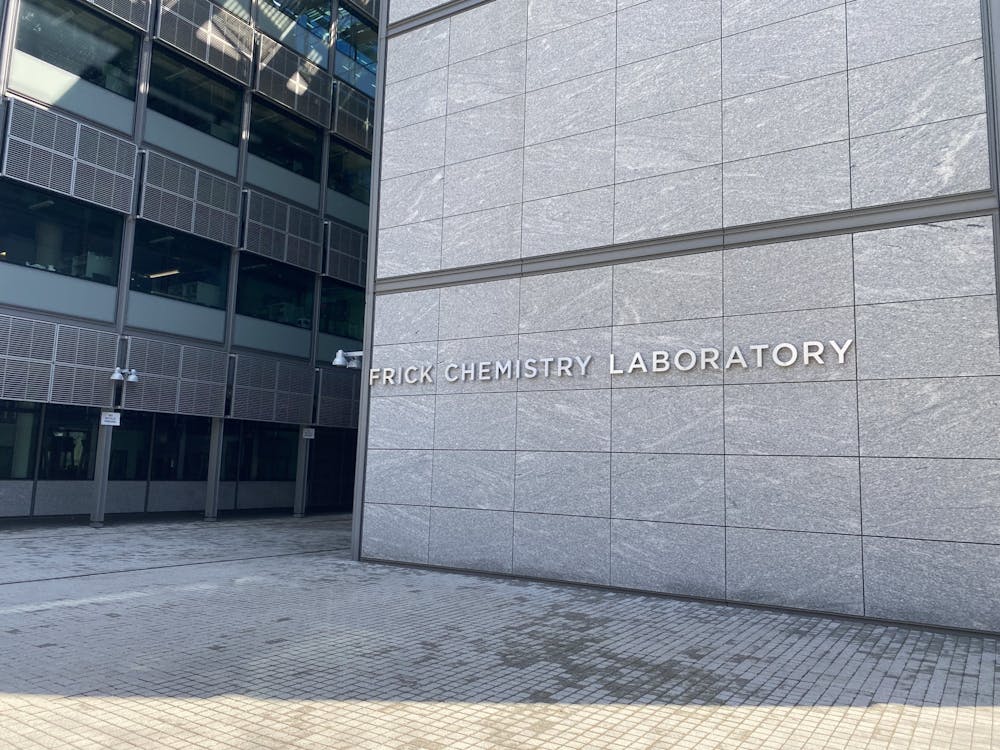In the March issue of Nature Synthesis, chemistry professor Paul Chirik’s lab published a groundbreaking paper reporting photocatalytic, room-temperature synthesis of ammonia. The work, he told The Daily Princetonian, holds great promises for a more environmentally sustainable production of the molecule.
Currently, ammonia is made at the industrial scale using the Haber-Bosch process, which requires temperatures of more than 300 degrees Celsius and a pressure of above 300 standard atmospheres. In Chirik’s pioneering research, the team harnessed light energy instead of high temperature as the driving force of the reaction, which allowed them to achieve the synthesis at room temperature.
Chirik told the ‘Prince’ that his lab focuses on exploring and developing better catalysts, molecules that are critical in a number of chemical reactions.
“In principle, a catalyst makes reactions go faster,” he said. “And it often makes reactions go more selectively, meaning that you don't generate waste.”
The lab’s work in catalysis is applicable to many chemical processes and industries — ranging from making organic molecules for drugs, to making plastics that are recyclable, to synthesizing ammonia for agricultural fertilizers sustainably.
Chirik especially emphasized the role of Sangmin Kim GS ’21 in the research of this ammonia-producing pathway. A former graduate student at the Chirik lab and now a postdoctoral researcher at the University of California, Los Angeles, Kim is the paper’s lead author. His interest in ammonia synthesis goes back to his junior year at Seoul National University, when he took a class on organometallic chemistry.
“In a lecture, the Haber-Bosch process … was taught and I was absolutely captivated by the beauty of this simple-looking reaction,” Kim said in an email to the ‘Prince.’ “[The Haber-Bosch process], however, poses very complicated fundamental challenges in synthetic chemistry. It was in that moment that I decided to pursue a doctoral degree to solve these challenges.”
Chemists have long faced the challenge of forming the weak nitrogen-hydrogen bonds that are needed to generate ammonia. To synthesize such weak bonds, Kim identified the use of an iridium compound as the catalyst, photoactivated by blue light.

The iridium catalyst has two roles: it absorbs light to utilize it as the energy source, and it cleaves hydrogen gas to deliver the hydrogen atom to nitrogen, making nitrogen-hydrogen bonds in ammonia.
“We’ve been after this problem for almost my entire research career, which is about 20 years,” Chirik said. “It is rewarding to see our work finally paid off.”
The work marks a new development in ongoing work in the field of photocatalysis. It demonstrates that in ammonia synthesis, light can be used to make atmospheric nitrogen’s chemical bonds weaker. Once the bond between two nitrogen atoms is weakened, it can be broken and individual atoms can be used to build other useful chemical bonds. This concept can be applied to energy conversion and storage.
“At this point, the reaction is still very far away from practical use, but we conceptually showed that light can substitute heat,” Chirik said. “We expect that this will eventually relieve the energy burden of the Haber-Bosch process for better sustainability.”

Correction: An earlier version of this article stated that this research was published in Nature. In reality, the research was published in Nature Synthesis.
Mahya Fazel-Zarandi is a staff writer for the ‘Prince.’ She can be reached by email at mahyaf@princeton.edu or on Twitter @MahyaFazel.








